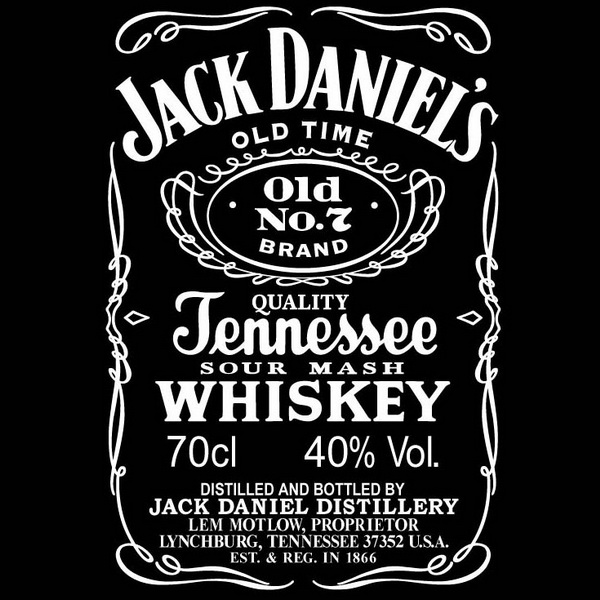
Shrift Jack Daniels
Top and center is the Jasper font, based on the familiar Jack Daniel's logo lettering (and bearing Jack Daniel's given first name). The real visual centerpiece,.
The distiller also transformed downtown Hamlet starting in 1906 by building its first block of brick buildings on Main Street, structures that still stand. He had surveyed and platted the downtown in 1898 and guided its development for the next twenty years.
His contributions include two identical Lackey buildings, one shown here at 23-27 Main, and the other at 41 Main. Nearby was the Central Hotel, constructed in 1911 with Lackey funding. It rose three stories, again in Italianate style. Lackey founded a bank and built a Neo-classical building to hold it A fifth Lackey building on Main Street he gave a distinctive cast-iron store front. As Jett had done in Carrolton, Lackey and his wife decided to build an opera house for Hamlet. Building commenced in 1912 for a hall with a Greek Revival facade and an ornate interior to match.
The opera house provided a venue for lectures by Booker T. Washington and William Jennings Bryan, songs by Jenny Lind, and shows by Buffalo Bill Cody and other traveling entertainers. “And for one glorious night in 1917,” according to an historian, “Hamlet was the center of the musical world as Italian tenor Enrico Caruso performed before a packed crowd.” This performance brought the saloonkeeper and distiller to the pinnacle of his success. Unfortunately, shortly after, Eli Lackey died at 57, victim of the 1918 Spanish flu epidemic. During that that term he pushed for and achieved the reclamation of some 43 acres of marsh lands and transformed it into public green space known as Woodland Park. Whipps also oversaw the installation of cement sidewalks, a system of lighting for the business district, and new municipal finance auditing systems.
He also able to obtain lower consumer water and electricity rates. “ Most of what was accomplished by him had to be fought through against strong opposition,” according to a biographer. To both his adversaries and friends, Whipps became known as the “Czar” of Kalispell. Whipps maintained a summer home at what was then the Glacier National Forest Reserve in Montana. When the Forestry Department was considering the sale of timber from the reserve from a site near Lake McDonald, shown above, Whipps “showed himself an aggressive friend of conservation and took up the matter directly with President Roosevelt, describing its wondrous beauty.” His was among a number of voices calling for the Glacier region to be made a national park, a process begun by Roosevelt and completed by his successor, President Taft.
Drivers test score sheet south africa today. • Not leaving enough clear space between you and the car in front when stopping or overtaking another vehicle or hazard will get you 5 points.
Friedman’s story began in April 1857 when he was born in Louisville, Kentucky, to parents accounted as pioneers in Kentucky. Moving to Paducah, about 1891 Friedman partnered with his brother-in-law in a liquor firm called Friedman, Keiler & Company.
Although their letterhead accounts them as “distillers,” the partners principally were “rectifiers,” blending and mixing whiskeys drawn from several Kentucky distilleries, including investing in one in Lancaster, Kentucky. The business was highly profitable and Friedman eventually was accounted the wealthiest man in Paducah and among the richest in Kentucky. His net worth at his death was accounted (in current dollars) at between $20 and $24 million. If Friedman had been only a whiskey merchant, however, he would not have merited the blaring headline in the Paducah News Democrat. His involvement in the commercial life of his home town was intense. He was a moving force for the development of the Paducah Traction Company, bringing street cars to the city, and subsequently was its president. Friedman also served as president of the company that constructed and owned the Palmer House hotel, shown here.
He is credited with building the Kentucky Theater. He was vice-president and director of the City National Bank, shown below, and a director of the Paducah water company. Friedman had a financial interest in the Smith & Scott Tobacco Company, and Lax-Fos, a patent medicine firm.